Apparently the technique of creating a pre-spun dubbed body on a spinning block which was promoted by Pete Hidy into the 70's must have had a following that carried on further than we thought. It seemed such a marginalized technique, certainly one of individual craft and executed one a homemade block. Pete Hidy and Dick Clark were generous in sharing blocks with a few friends and like minded flymph tiers here and there. It wasn't until Lance decided to create a batch of blocks based on one of his father's blocks, that a spinning block had ever been mass produced or offered to the public. Making a small batch of these things certainly seems like mass production by the time you finish. I know Lance was not interested in doing it again. While I began producing blocks at the same time and fussing with variations, we thought we were making history by making the blocks available to the public on a much larger scale for the first time.
While there remains some truth to this, we were very surprised to find a small company in Massachusetts who thought there was a market for a product to sell in fly shops, likely in the 80's. These must not have sold well, as no one we've talked to has ever heard of the gadget, and Mr. Shaner, who has plundered every fly show, shop and artifact for 30 years had never seen one either. Kudos to this little company who devised a very well made and thoughtful dubbing block. Whoever owned this Dubber was very well practiced as the bodies found inside are remarkably sparse and nicely tapered. I have spun about two dozen bodies on the block to find if I could reproduce the results found on these existing cards. With mole and beaver, I was able to manage a match, but for anything with a longer staple, or requiring a spikier body, I couldn't do it. I'll explain as we go. So here it is...The Dubber.
The Dubber
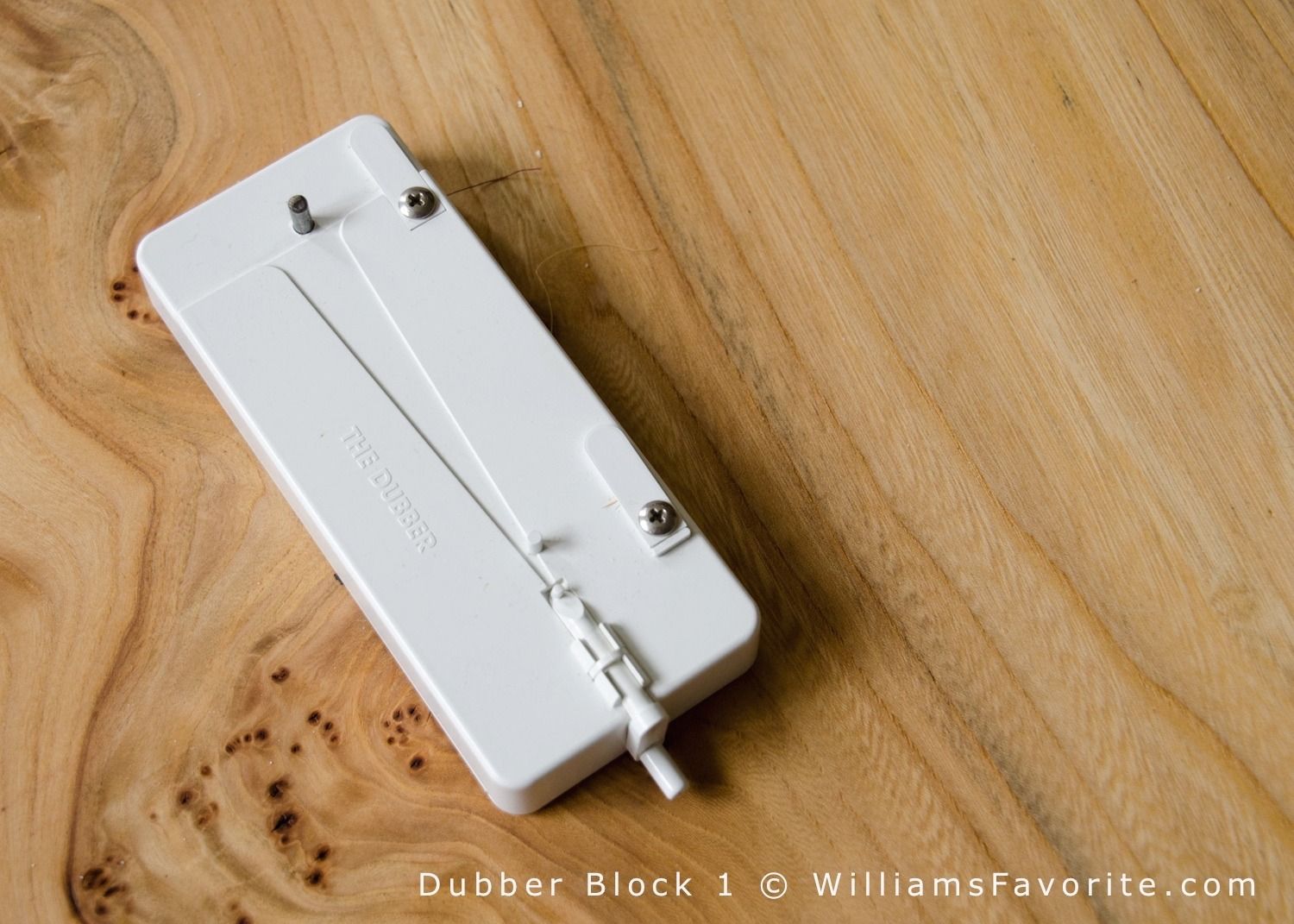
The inside contains pre-sized and notched cards for storage. Very nicely done.

These cards stored inside the block were spun by previous owner.
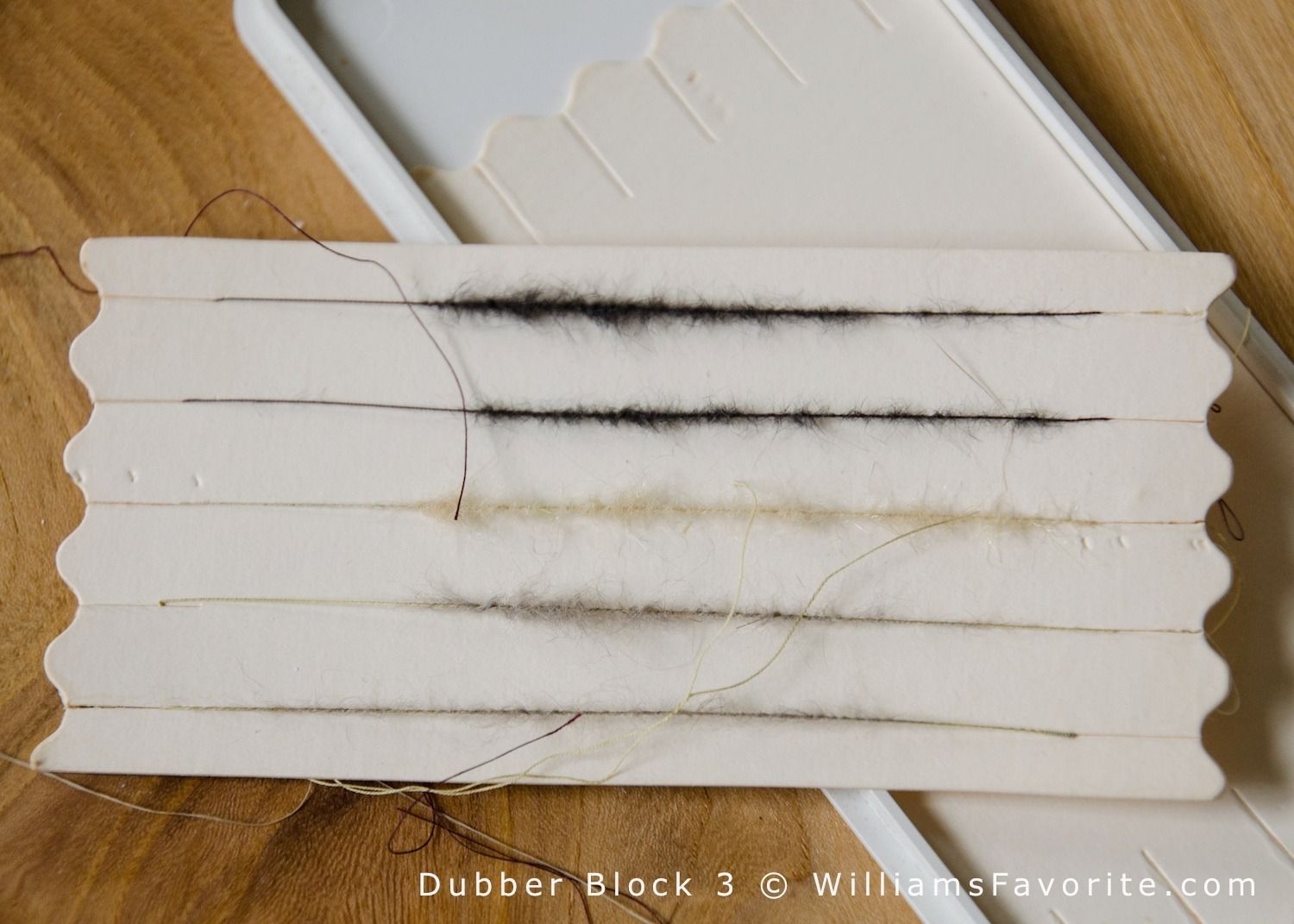
A comparison of a more traditional block that I made and The Dubber.
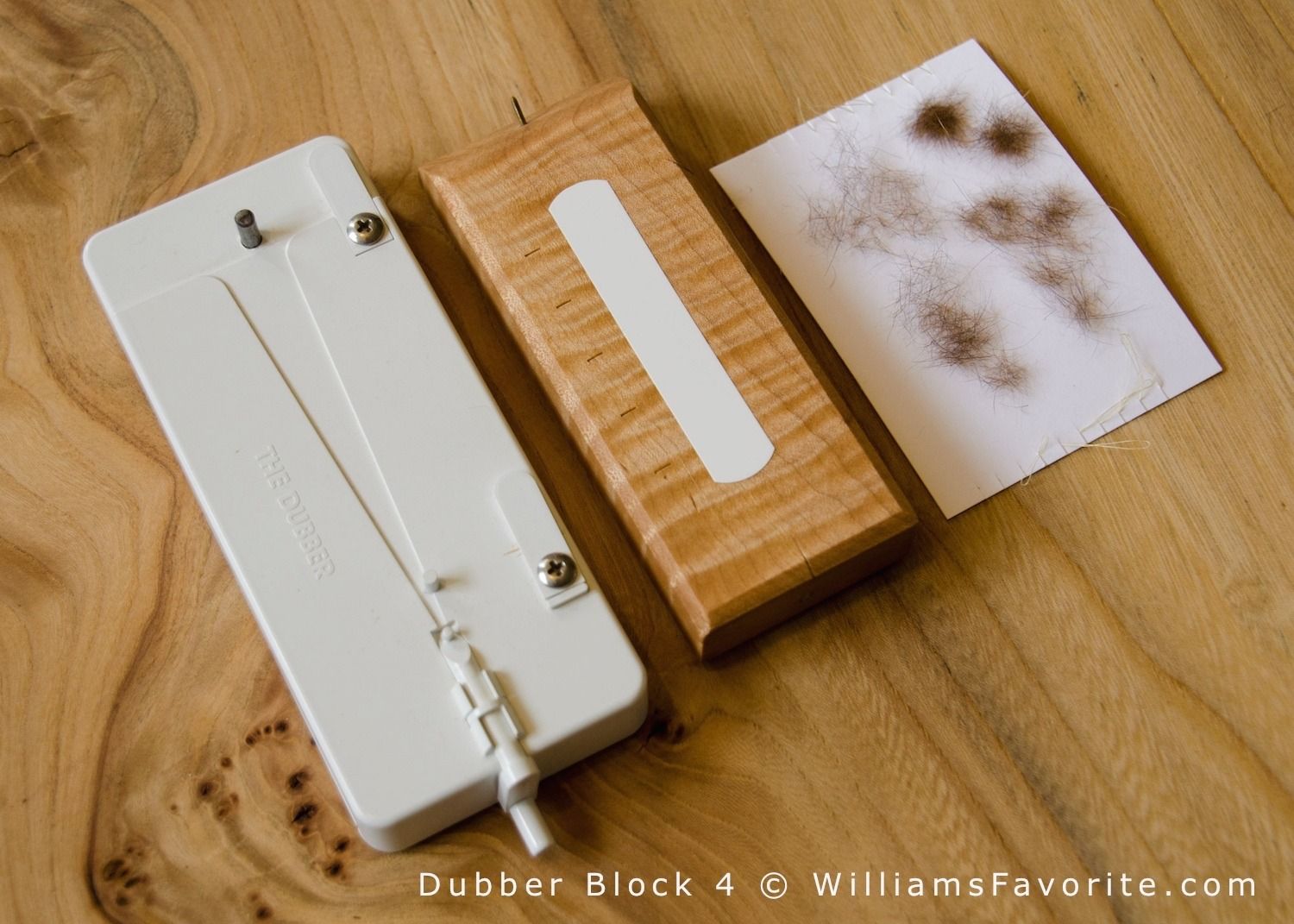
I wanted to show the difference between to the two, especially the resulting bodies. Here I wanted to show the difference in how the silk is attached.

The catch and pin for the pre-waxed silk at the top. Silk is trapped at the top and brought down to wrap around a post on a crank.
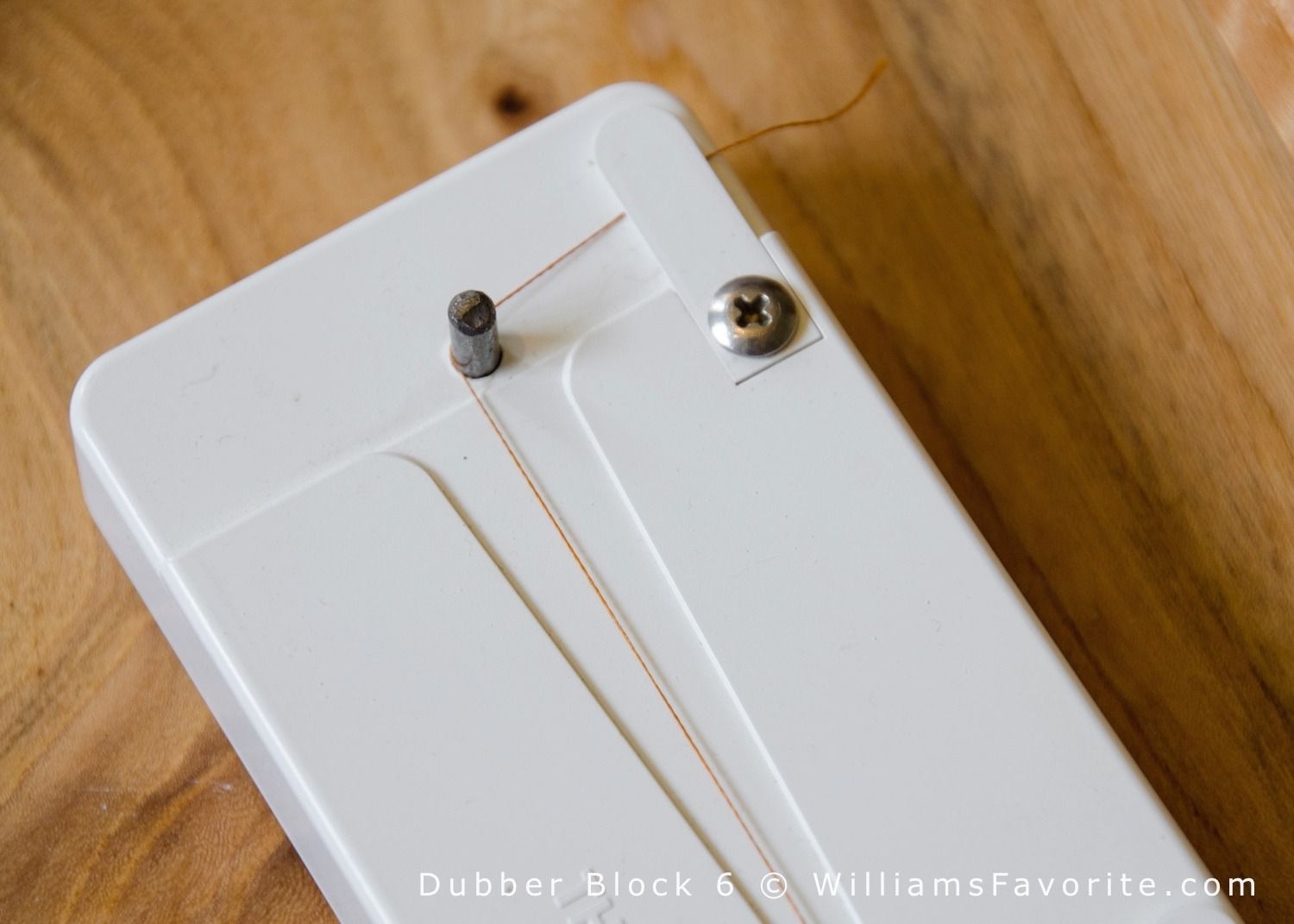
A significant difference is the tiny crank at the bottom of the block to spin the silk.
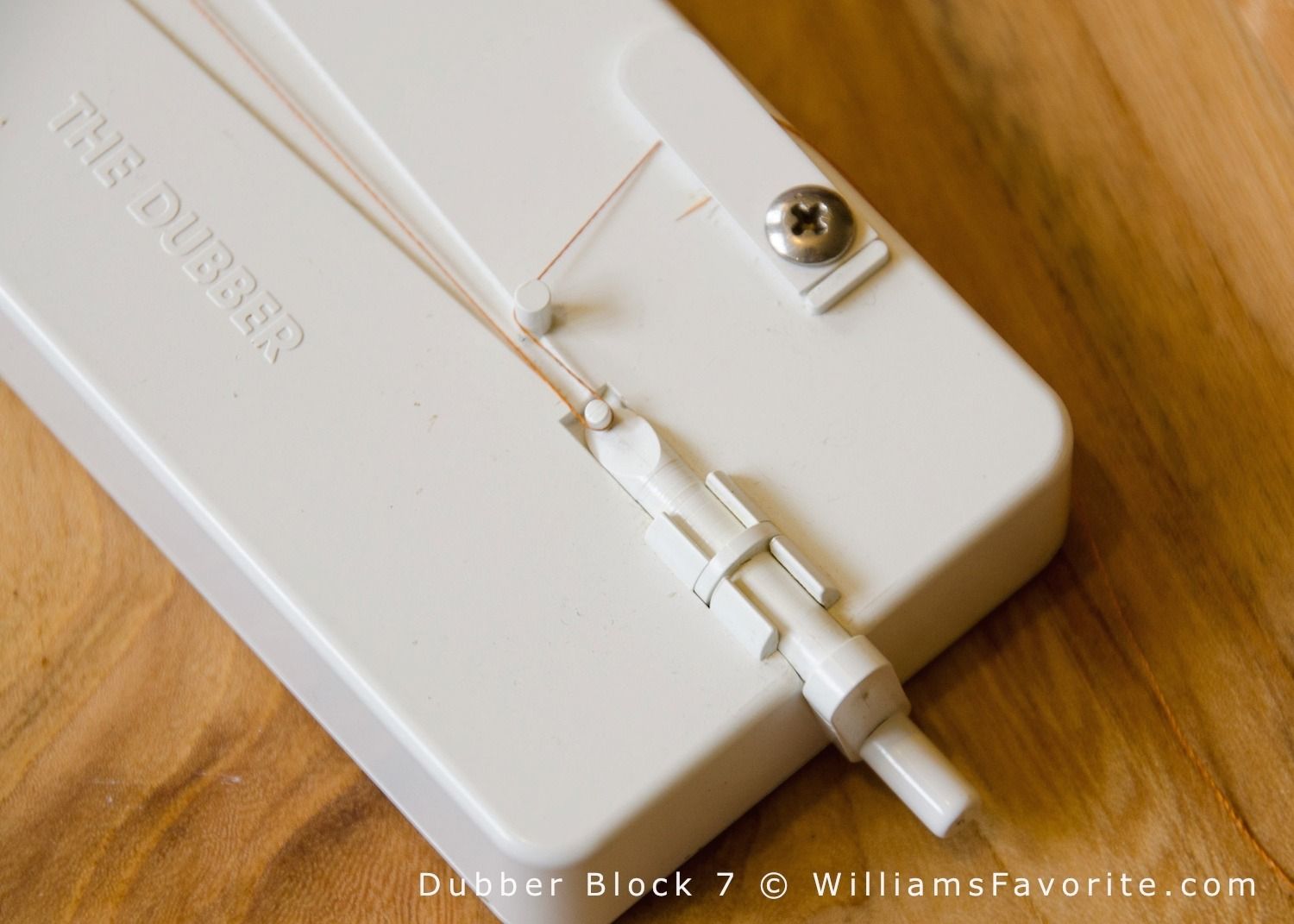
I've chosen a darker blend of hares mask with a bit of the underfur. It creates a very lively body with some density. I set aside two equal amounts of the dubbing and spread it out some in identically. I placed the dubbing in a matching taper and density configuration on each block.
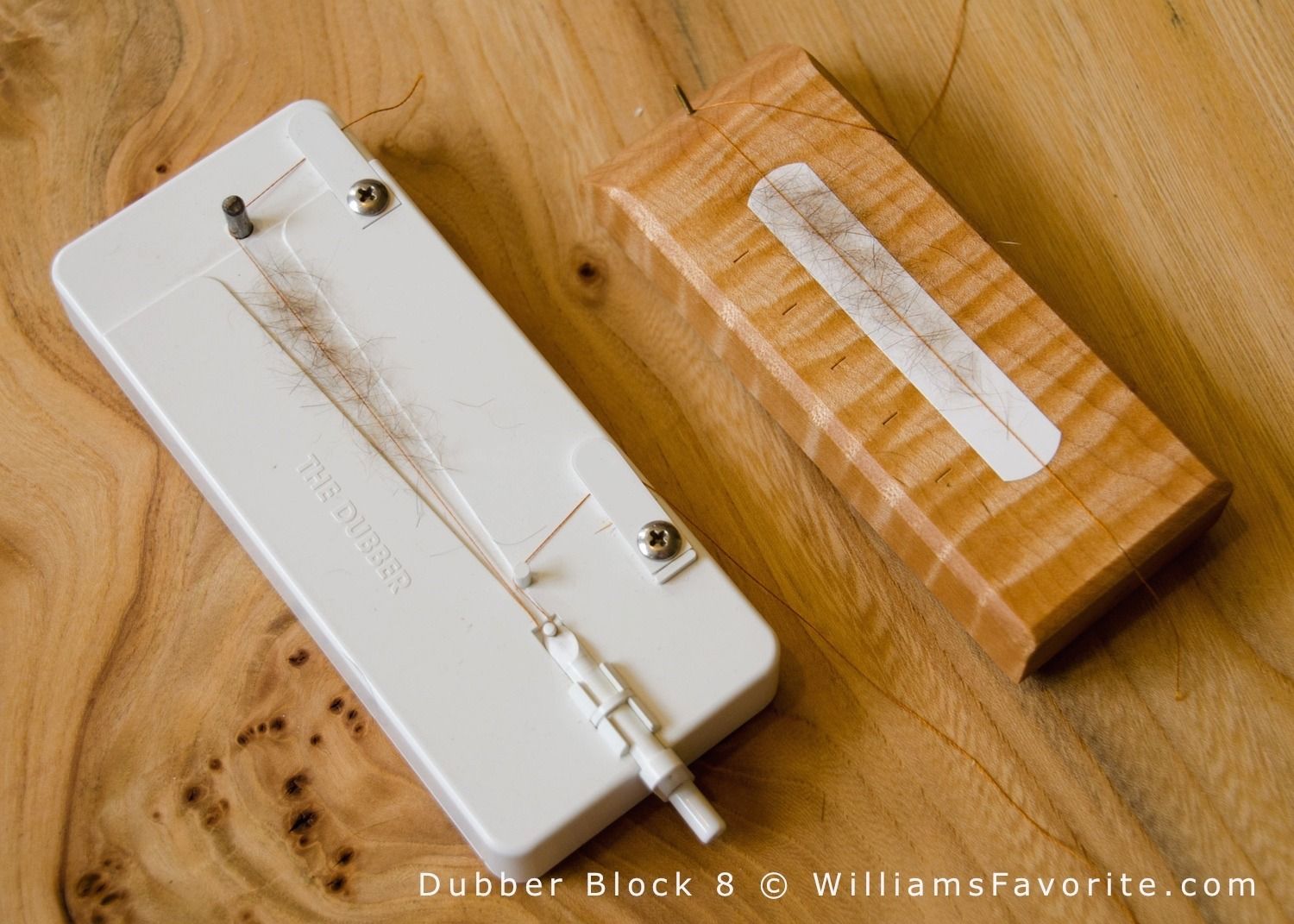
The second length of the silk is brought back over the dubbing. On The Dubber it's brought from the bottom back to the top, while the traditional block brings the silk back around the pin and down to the notch in the bottom.

A fundamental difference. Once you start cranking the handle the dubbing and silk are bound down against the block itself and creates a more intertwined body. You can't manipulate this as the silk is locked in and cranking is your only option. With a more traditional block, I usually take a couple twists between my fingers while the silk is held in the bottom slit so when I lift there is already a bit of trapping and spinning in effect. I maintain the body lifted off the block surface and continue to roll/ twist the silk between my fingers allowing fibers to extend perpendicular to the silk cord being created. I know everyone has a different way of spinning the body, some use hackle clips or other techniques, but this is how I do it.
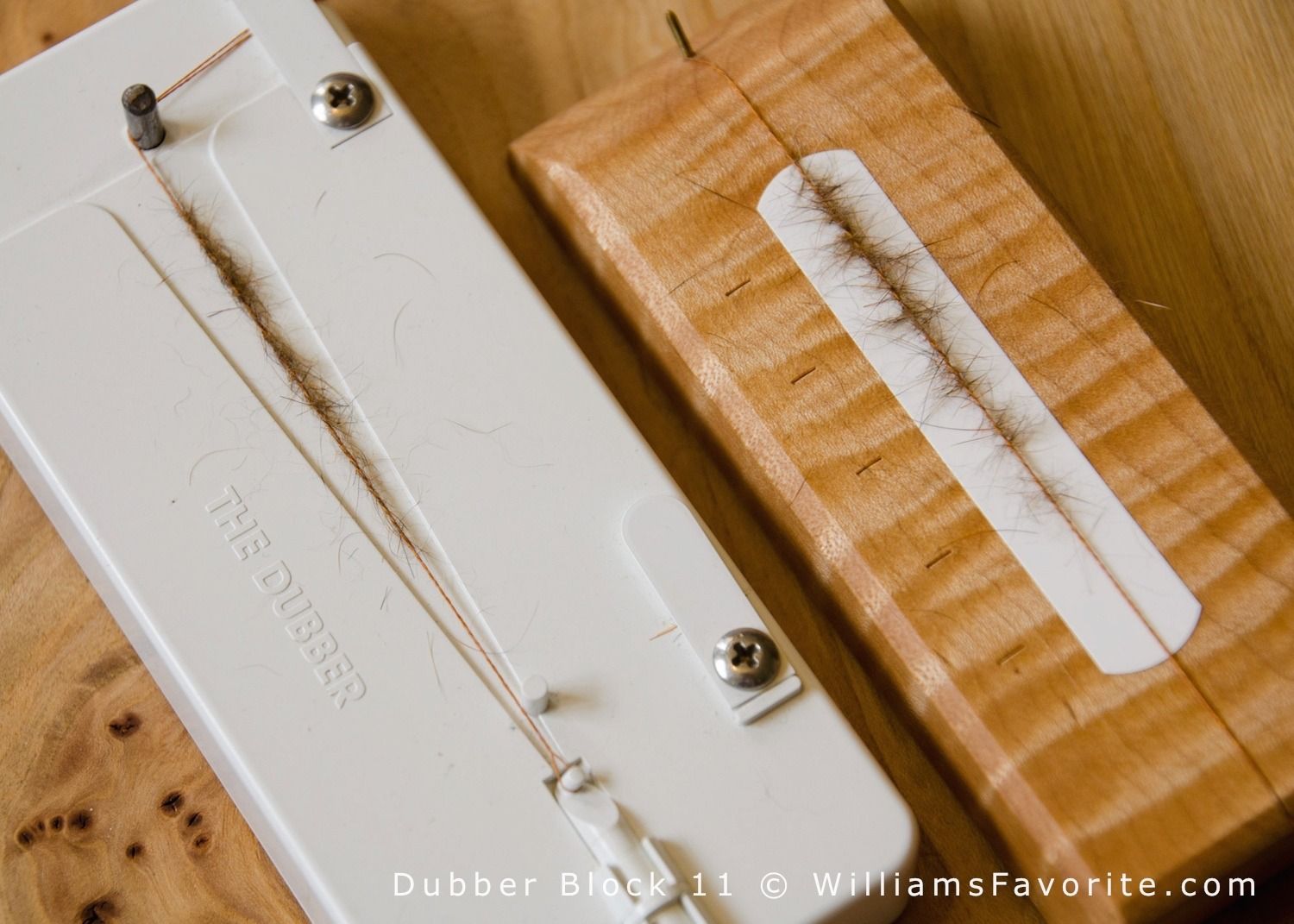
The bodies once carded.
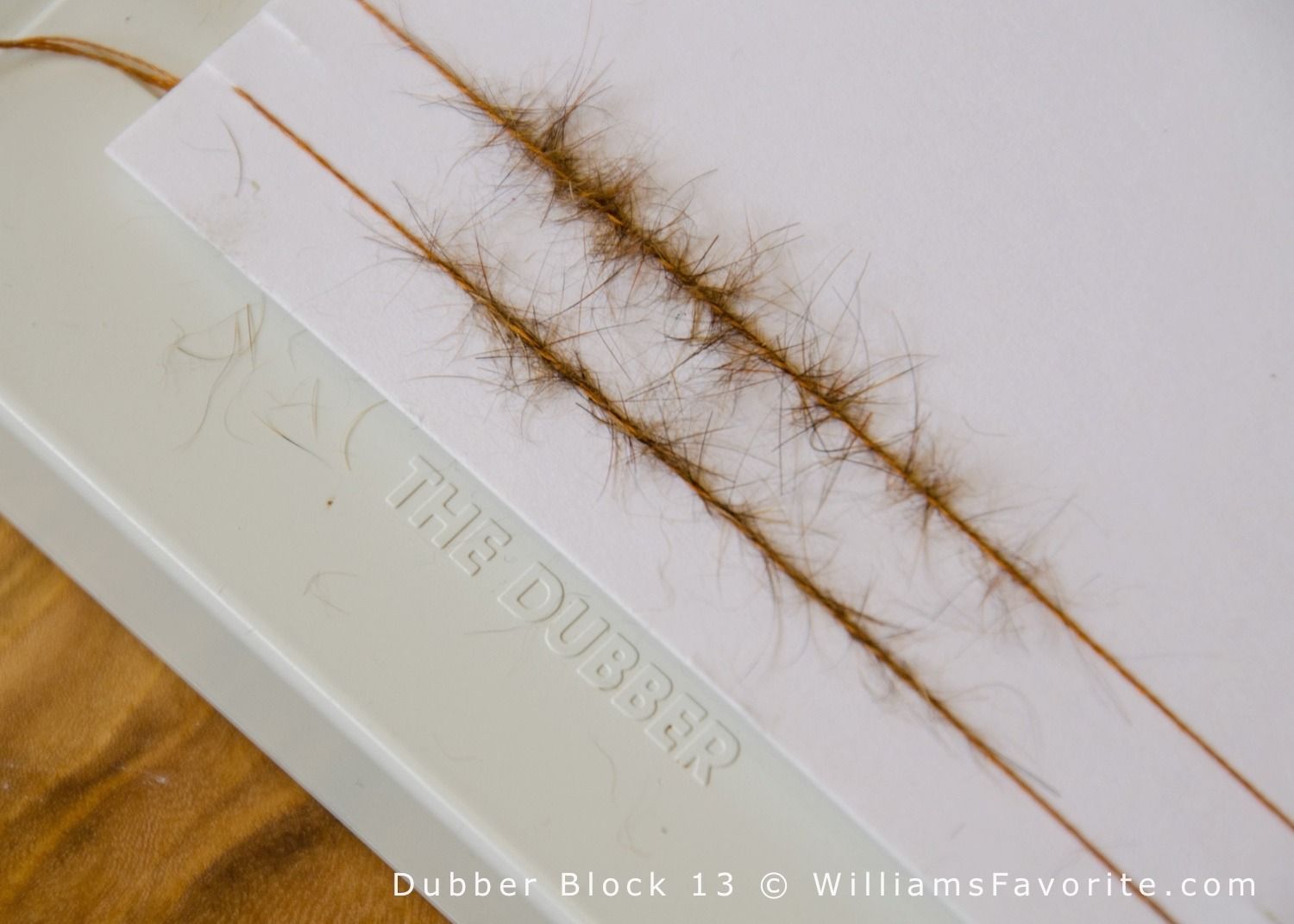
Granted I'm biased toward the traditional block, because as I practiced with The Dubber I felt helpless to let the bodies bind on themselves and I prefer a much livelier result. But aside from that, how freaking cool is it that this thing exists and was at one time produced and offered for sale? There is no patent on it, just the town where it was made. The large pin in the top is a steel framing nail filed down, which made me happy to be using a solid brass brad.
If anyone out there has any further information about this object I'd definitely love to hear more about it. I'm just excited that the technique was so popular after the second edition of The Art of Tying the Wet Fly and Fishing the Flymph that something like this was feasible.
